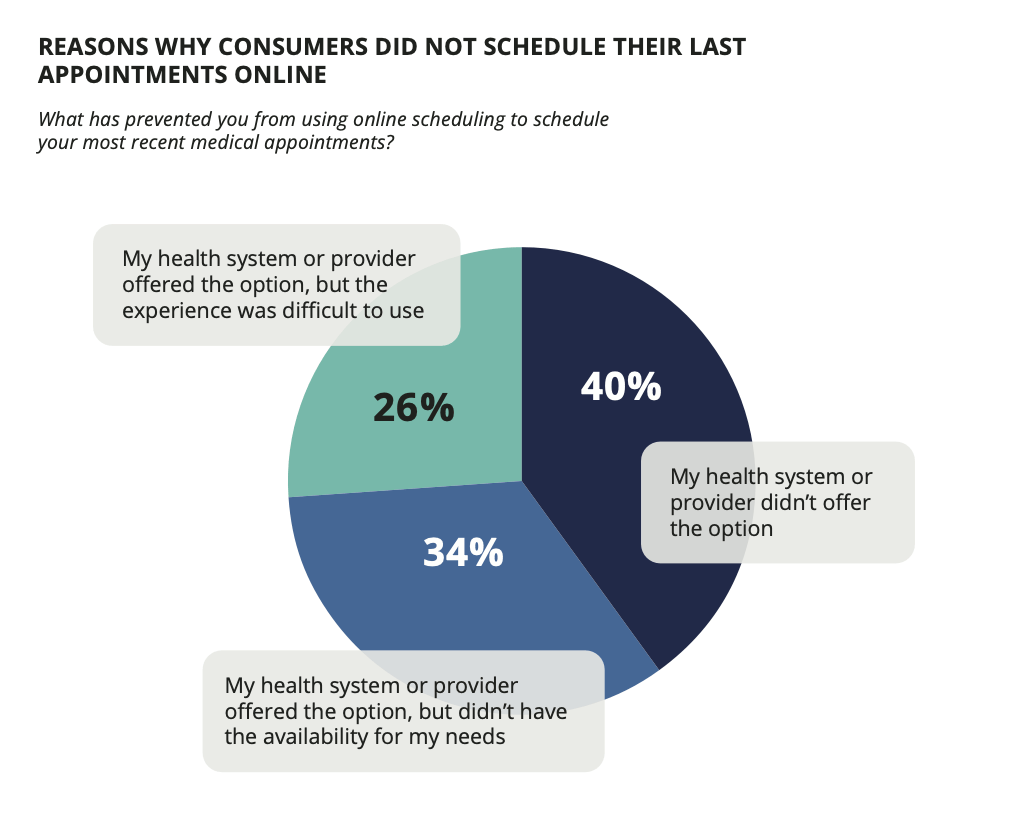There is a growing expectation for convenience that spans across various aspects of daily life. Coupling that with desires for flexibility and tailored experiences significantly influences consumer interactions. This is seen across multiple sectors—including travel, retail, and banking. These industries have long embraced the shift towards catering to consumer preferences. Through technological advancements, it is easier than ever before to purchase a flight or deposit a check. So where are the healthcare solutions like patient online scheduling?
Healthcare, traditionally slower in adopting such consumer-centric innovations, has begun to recognize in recent years the importance of integrating technology to align with the evolving expectations of healthcare consumerism. This shift is evident as more healthcare providers invest in digital solutions, such as patient online scheduling, to enhance patient experiences and meet their needs for convenience.
Accurate Provider Data Improves Patient Online Scheduling
When patients find it difficult to access the necessary information that aids in their healthcare decision-making, they are more likely to switch to a different provider. This is particularly true if they encounter obstacles in easily obtaining information such as provider availability or insurance compatibility. This is what makes provider data management so foundational to an organization’s digital strategy.
Patients tend to favor providers with a robust, accurate digital presence. Providers that integrate advanced digital tools, such as a user-friendly search and schedule experience that allows for filtering by various personal parameters, are better positioned to meet these needs. By offering such resources, healthcare providers can ensure that patients have a smoother, more informed experience that aligns with their expectations and needs, thereby reducing the likelihood of patients seeking care elsewhere.
Advantages of Patient Online Scheduling
For many hospitals, health systems, and medical groups, digital health tools that enable patient online scheduling are the top target for investment. The problem is that only a small percentage of these healthcare providers have such resources in place. A recent survey showed that when asked why they did not schedule their last appointment online, 40% of patients noted that their health system or medical group did not provide the option.

Why is the capability of patient online scheduling so important? Researchers have identified numerous advantages of automated patient self-scheduling, including:
- Labor savings
- Information transparency
- Cost reduction
- Cycle time
- Patient satisfaction
- Patient engagement
- Patient accountability
- Patient information
- Patient time savings
- Physician punctuality
- Patient loyalty
- Patient attendance
In addition to these benefits, patient online scheduling has proven to be a vital tool in improving care management and adherence and closing gaps in care. Briefer gaps in care often lead to better health outcomes.
Patient Online Scheduling: Perks for Healthcare Providers
Convenience is a big reason over 80 percent of patients state that the availability of patient online scheduling is important to them when selecting a new provider. They have 24/7 access to their provider’s schedule and can book appointments—not to mention imaging, vaccines, and screenings—from the convenience of their phone, tablet, or computer.
That flexibility doesn’t only benefit patients, though. When healthcare providers offer automated patient self-scheduling, they’re more likely to differentiate themselves from competitors. The result is better patient retention and higher revenue.
What else is in it for hospitals, health systems, and medical groups? Reduced patient no-shows and delays, decreased administrative burden for staff, and more accurate patient-provider matching.
Patient Online Scheduling Helps Reduce No-Shows
Patient no-shows aren’t just annoying for providers. They cost the healthcare industry an estimated $150 billion annually — 150,000 for solo physician practices. However, practices actively working to minimize no-shows can reduce them by up to 70 percent.
Digital health solutions utilized to remind patients of an upcoming appointment help mitigate no-shows. They can also provide patients with instructions for checking in before their visit, adding another layer of engagement to decrease the number of no-shows and cancellations.
For practices that may have trouble filling last-minute cancellations, patient online scheduling may be able to help. By providing real-time access to a provider’s schedule, patient online scheduling tools allow individuals to take advantage of these newly available appointment slots in real-time, meaning practices don’t miss out on that revenue.
Patient Online Scheduling = Satisfaction for All
Patient self-scheduling also mitigates common barriers to access, including limited hours of operation and long hold times. It takes an average of eight minutes for a patient to schedule an appointment over the phone. That’s compared to only one minute when booking via a digital health tool. Physician practices with longer wait times typically receive lower patient satisfaction scores. A recent survey showed that 22% of patients were put on hold for a long period of time when they last called into their healthcare organization to make an appointment.

Used in combination with patient online scheduling solutions, digital check-in tools help eliminate patients’ traditional waiting room activities of filling out paper forms and submitting insurance information. Another win for patient satisfaction!
Patient satisfaction can play a big role in the effectiveness and productivity of practice staff—both physicians and non-clinician employees. Digital patient self-scheduling offers a better patient experience and enables better allocation of human resources.
By reducing the administrative burden on staff, they have more opportunity to engage with in-office patients face-to-face. They also can focus on other higher-value priorities, both clinical and administrative—especially those that drive revenue.
More Accurate Patient-Provider Matching
When a patient receives care from a provider who doesn’t have the correct clinical expertise to meet that individual’s need, time is wasted on both ends. And, both patient and provider staff often are negatively affected. Employing digital patient online scheduling not only enables organizations to increase scheduling accuracy, it also confirms patients meet specific requirements before scheduling online, thereby ensuring a more accurate patient-provider match.





